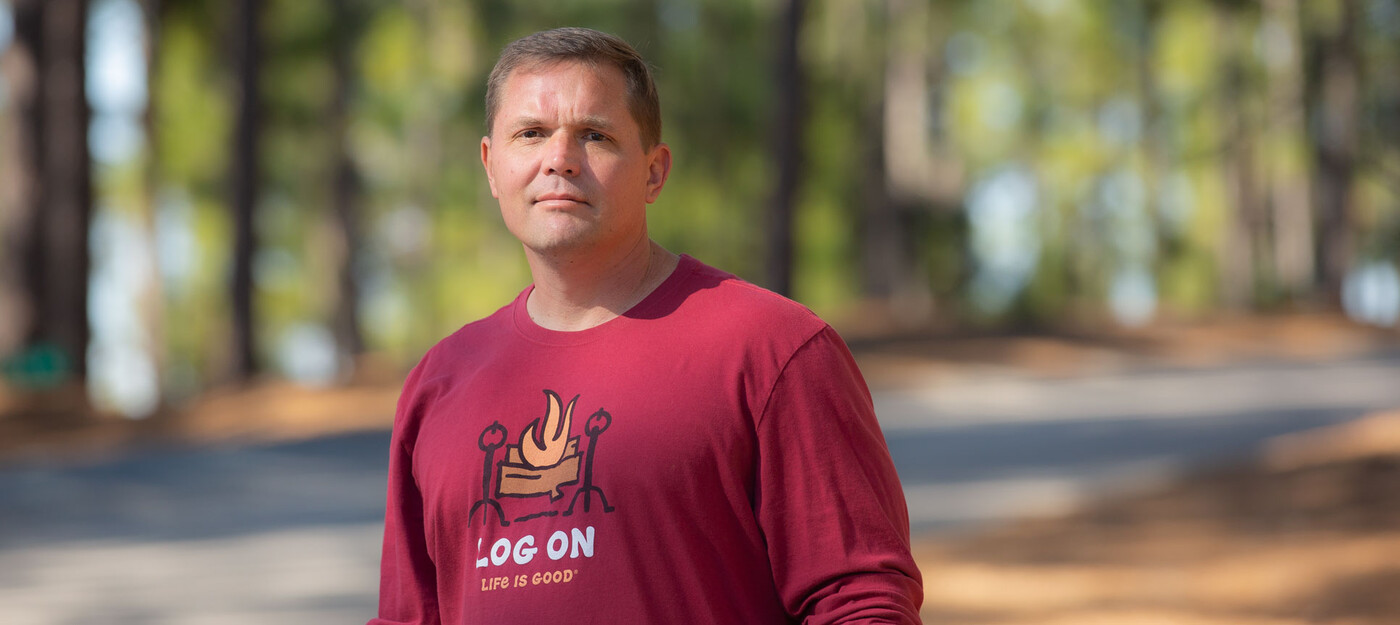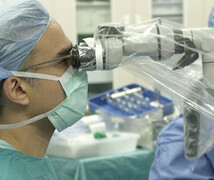Paul Brezinski was only 37 when he was diagnosed with Parkinson’s disease. Within eight years, his tremors made life so difficult that he traveled from his home in New Mexico to Pennsylvania to have deep brain stimulation (DBS) surgery. While the tremors on his left side subsided, his doctors couldn’t get the ones on his right side under control. When Brezinski moved to North Carolina, he reached out to the movement disorders specialists at Duke Health. They performed a second surgery to tweak one of his two DBS leads. Now, Brezinski is doing much better.
“When your hands shake all the time, there's a lot of stuff you can't do well,” Brezinski said. “Writing, drinking, eating, all those things are so much better for me now. This has given me part of my life back.”
An Unexpected Diagnosis
Paul Brezinski wasn’t expecting a Parkinson’s diagnosis when he returned from a tour of duty in Afghanistan in 2009. Brezinski, who ran hospitals and clinics for the Air Force, reached out to colleagues for advice on treatment options. When his tremors got so bad that medications weren’t enough, Brezinski opted for deep brain stimulation (DBS) surgery.
What Is DBS?
DBS is a two-part surgical procedure that involves inserting tiny wires into specific parts of the brain. The wires are connected to a small battery that is placed in the chest, similar to a cardiac pacemaker. The DBS system delivers electrical pulses that disrupt the brain activity that causes tremors and other symptoms of Parkinson’s disease. To maximize benefits and minimize side effects of the device, the DBS system is adjusted by a neurologist who specializes in movement disorders like Parkinson’s.
Tremors Persist After Surgery
Brezinski saw an improvement in his left side after his surgery, but his right-side tremors persisted, despite extensive DBS adjustments. In 2019, when Brezinski was transferred to Pope Army Airfield in North Carolina, he reached out to specialists at Duke.
“When I first met Paul, what struck me was just how young he was,” said Duke neurosurgeon Derek Southwell, MD. “I could appreciate what an active person he had been before this condition took hold of him, and it was clear he had been doing all he could to minimize its impact on his life. Still, it was frustrating to think he had been through a surgery that had the potential to really help him, yet he wasn’t really experiencing the benefits he had expected.”
Revision DBS Surgery at Duke
Duke movement disorders specialist Kyle Mitchell, MD, and Dr. Southwell recommended that Brezinski undergo a second DBS surgery. They repositioned one of the two wires in his brain, and they replaced it with a new one that to direct the electrical impulses. The results were better than Brezinski expected.
“As soon as the settings were adjusted, my body adjusted. When it was turned off, I was a shaky mess. When it was turned on, I went from shaking to nothing within minutes,” Brezinski said.
Taking Advantage of New Possibilities
Brezinski, now 47, is retired from the Air Force and spending more time with his four kids at their home in Seven Lakes, NC. His goal is to be able to walk at his five-year-old son’s high school graduation. “I took a lot of things for granted that I don't take for granted anymore.”
These are the kind of quality-of-life goals that Dr. Mitchell and his colleagues at Duke want to help people achieve. Using advanced treatments like DBS, Duke’s team of movement disorder specialists can offer options to people who thought they had tried everything.
“We can handle the complexities of DBS,” said Dr. Mitchell. “We can take on these challenges. In this case, it was great to see someone go from really struggling to feeling less limited by his Parkinson's. It’s a good feeling to be a part of that.”




